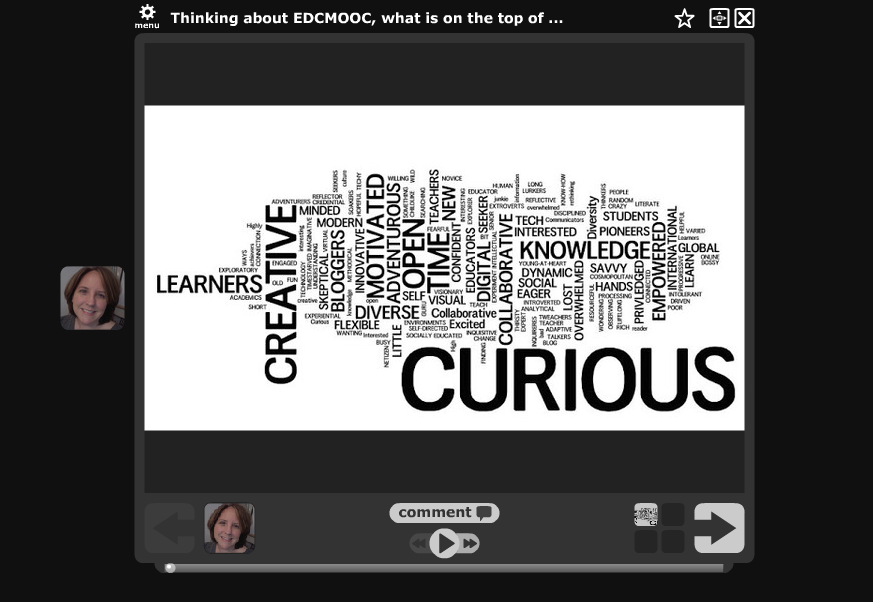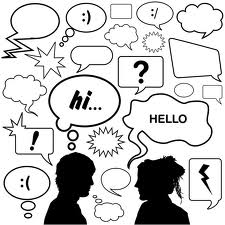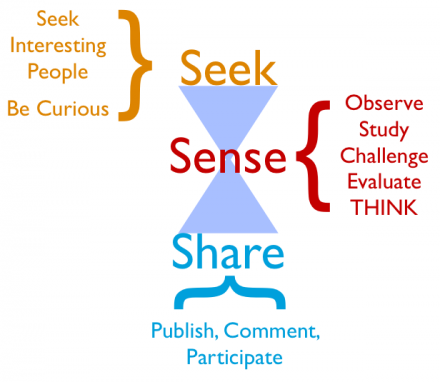
So this week we are exploring metaphors. Metaphors of technology and its use have an immense power to shape our eventual understanding and sense of possibility. We can tell stories of fear or wonder and perhaps the reality is somewhere in between.
I had been contemplating how our mental models of what is a class and what it is to learn are based on our previous experiences. These experiences in turn shape our expectations for MOOCs. We have a certain idea of what it means to take a class. What the structure is. What is expected of us. But what happens when those expectations are disrupted? Like Clay Shirky describes in his essay on Napster, Udacity and the Academy, we may be so preoccupied with how we think learning is supposed to happen or is suppose to be, the we don’t see the new possibilities presented to us within a context of change.
Does learning have to happen in the way we currently construct it? What would learning look like if each person mapped out their own personal learning plan or goals? Do we, as potential learners, even know how to create these or what they are? What would our own Personal Learning Networks look like if we had no barriers? Should our current educational systems be more about learning the skills and confidence to learn rather than focus on content? What are the possibilities presented by a global knowledge network fueled by the Internet, that operates more like an ecosystem than a discrete classroom? The theory of connectivism keeps poppiong up.
Shirky tells us that that “new technologies allow us to tell new stories.” The e-Learning and Digital Cultures (#edcmooc) course along with my experiences with the teaching methods in the Critical and Creative Thinking Program at UMass Boston show that we can rethink and recreate the processes by which we engage learning — both with and without technology enhancements. We can find ways to increase individual motivation and passion for learning while building the confidence and agency for the learner. It’s just that we have for too long been conditioned to expect that learning happens in prescribed ways. How do we create the places for students to develop “curiosity and a questioning disposition, what we’ve called in the past a gaming disposition?”
This seems related to Bateson’s Levels of Learning described by Gardner Campbell in is keynote at the Open Ed 2012. We think of learning often within the context of a formal or institutional setting. We take a class. A class has a set format, defined goals and roles, activities set forth with a set duration. The learning is contained within the class with some structured amount of outside work which is structured and tied back to the class. Admittedly there is a certain amount of variety within this format. Yet, we are often motivated by external demands such as grades, tests, and degrees that we forget or ignore our own curiosity and passion for learning.
But what happens when the ways learning is suppose to happen gets disrupted? What if learning can happen any where? What if everyone is a potential teacher? What if the content has substance but no specific format or set boundaries? What if the learner is in charge? As Shirky says “[t]he possibility MOOCs hold out is that the educational parts of education can be unbundled.” But do these possibilities present a vaste array of possibiliteis or do they threaten to homogenize knowledge as Depedeva posits on her blog?
So the one area I keep coming back to and is the basis of some writing I’m doing on digital badging, where do credentials and accreditation fit into all of this? Clearly many who engage in a MOOC are doing so for their own professional and personal development. But if we are proposing MOOCs as alternatives to our current systems of education, how do we help students demonstrate their mastery and competence? Do we decouple the learning from the certification? Ifs so, what are the new systems of credentialing needed for this new environment?






